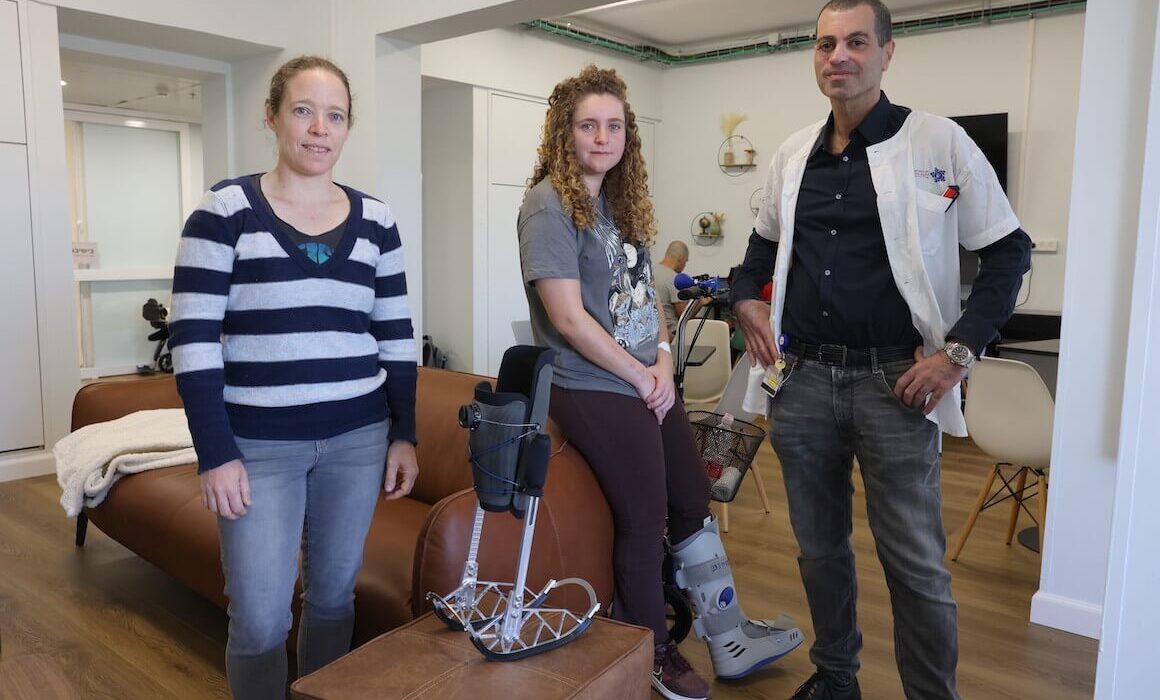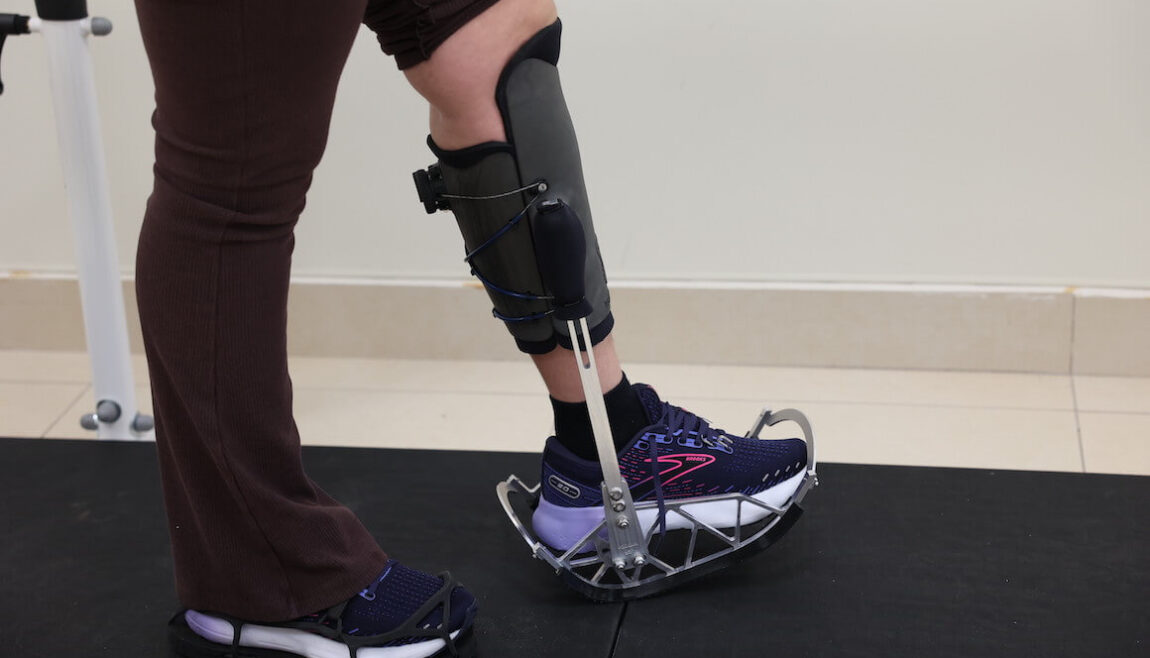A New Step Toward Healing With Innovative Orthotic Technology

Kfar Aza resident Neta Portal woke up to the sound of warning sirens in her apartment with her partner Santiago on the morning of October 7. Despite hiding out in their safe room, terrorists penetrated the door with bullets before throwing a grenade that forced Neta and Santiago to flee from the apartment through a window. While escaping, Neta retained seven gunshot wounds to her legs while Santiago suffered from a gunshot to his back. The couple was ultimately rescued and treated in the hospital, but both still have a long way to go to heal.
Now, Neta is back on her feet – literally – thanks to Assistant Professor Dana Solav of the Technion Faculty of Mechanical Engineering and Dr. Amir Haim, director of the Biomechanical Rehabilitation Unit and senior physician at the Loewenstein Rehabilitation Center. The two created a unique orthotic device tailored specifically for Neta based on 3D scans of her leg to aid her in walking while her injured ankle is unable to bear weight. They developed the technology under the guidance of Professor Alon Wolf during their studies at the Technion and have maintained a rewarding professional relationship since.
The device’s purpose is to enable the recovery of mobility while practicing natural and symmetrical walking under the requirement that the ankle is entirely or partially offloaded. It effectively transfers weight to the healthy part of the leg above the injury, allowing walking without causing pain. It features an adjustment mechanism that allows for a gradual and measured increase of weight-bearing of the affected part of the leg, according to the level permitted by the clinical condition.
Credit: Chen Galili, Technion Spokesperson’s Office
According to Prof. Solav, the device allows the knee and hip joints to move and function normally, which helps prevent muscle atrophy and bone density reduction – especially in long-term rehabilitation processes. The 3D scanning technology eliminates the need for a traditional plaster cast, and the computational design process facilitates the fabrication process, which combines a lightweight aluminum frame and 3D-printed parts.
Along with her research team of students and engineers, Prof. Solav is continuing to develop and improve the device for other uses, such as assisting diabetic patients who cannot walk due to pressure ulcers on their feet. The team is also planning to conduct clinical trials in collaboration with Loewenstein Rehabilitation Center and hopes to see how the orthosis can aid in walking rehabilitation.
In an interview with Ynet, Neta shared her gratitude and optimism: “Before the operation, thanks to the Technion’s device, I already managed to take several steps and jump on my right leg. It’s important for me to say that the work carried out by the team is amazing, and it has become an integral part of my rehab. They were very attentive and responsive. I was in a wheelchair for almost three months, and thanks to them, I went back to walking on my feet, even if not completely. They don’t know yet whether I will fully recover, but I hope so.”
Top photo credit: Chen Galili, Technion Spokesperson’s Office
